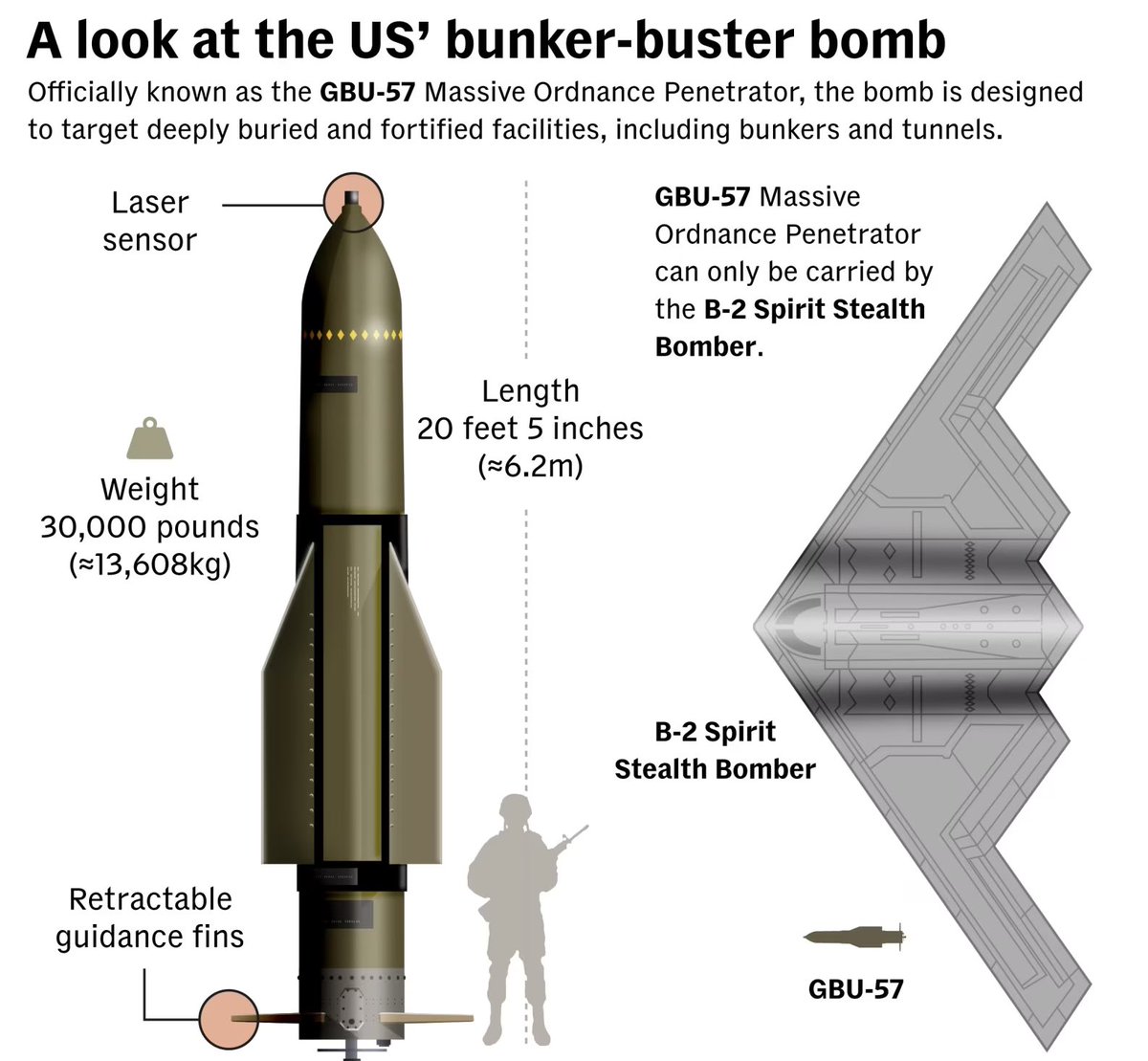U.S. Unleashes Devastation: B-2 Bombers Target Iran’s Nuclear Sites!
Summary of U.S. Military Actions Against Iran’s Nuclear Facilities
In a significant escalation of military action, reports emerged indicating that U.S. B-2 stealth bombers targeted Iran’s Fordow nuclear site with a barrage of 14 GBU-57 bunker-buster bombs, each weighing 30,000 lbs (approximately 13,600 kg). This operation, aimed at neutralizing Iran’s nuclear capabilities, underscored the heightened tensions surrounding Iran’s nuclear ambitions and the global implications of its nuclear program. Additionally, American submarines contributed to this military effort by launching 30 Tomahawk missiles at critical nuclear facilities in Natanz and Isfahan.
Background of the Conflict
The conflict between the United States and Iran has been characterized by deep-seated geopolitical tensions, particularly regarding Iran’s nuclear program. The Fordow facility, located near Qom, has been a focal point of international concern due to its role in enriching uranium, a key component for nuclear weapons. The U.S. and its allies have long accused Iran of seeking to develop nuclear weapons capabilities under the guise of a civilian nuclear program.
The situation escalated in the years leading up to this military action, with various diplomatic efforts failing to curb Iran’s nuclear ambitions. The U.S.’s withdrawal from the Joint Comprehensive Plan of Action (JCPOA) in 2018 further strained relations, leading to an increase in sanctions and military posturing in the region.
Details of the Military Operation
The operation involved the deployment of advanced military technology, showcasing the U.S. military’s capabilities. The B-2 stealth bombers, renowned for their ability to penetrate sophisticated air defenses, were crucial in delivering the GBU-57 bombs to the Fordow site. These bunker-buster bombs are specifically designed to penetrate hardened targets, making them an effective choice for destroying fortified military installations.
- YOU MAY ALSO LIKE TO WATCH THIS TRENDING STORY ON YOUTUBE. Waverly Hills Hospital's Horror Story: The Most Haunted Room 502
The operation at Fordow was complemented by additional strikes on other nuclear facilities in Iran. Submarines launched 30 Tomahawk missiles aimed at both Natanz and Isfahan, two other significant locations in Iran’s nuclear infrastructure. Natanz has been known for its centrifuge operations, while Isfahan plays a critical role in uranium conversion.
Implications of the Military Action
The military actions taken by the U.S. have far-reaching implications, not only for Iran but also for regional and global geopolitics. The use of such powerful munitions signifies a shift in U.S. military strategy towards a more aggressive stance against perceived threats to national and global security.
This operation could potentially provoke a severe response from Iran, escalating tensions further in an already volatile region. Iran has historically retaliated against U.S. actions, and this strike could lead to increased hostilities, including cyberattacks or direct military engagement in the Persian Gulf.
International Reactions
The international community is closely monitoring the situation, with reactions varying across different nations and organizations. Allies of the United States may view the military action as a necessary step to prevent a nuclear-armed Iran, while adversaries could interpret it as an aggressive act of war.
Countries in the Middle East, particularly those with close ties to Iran, are likely to express concern about the potential for conflict escalation. The United Nations and other international bodies may call for restraint and urge both parties to return to diplomatic negotiations to avoid further military confrontations.
The Future of U.S.-Iran Relations
This military operation marks a critical juncture in U.S.-Iran relations. The effectiveness of the strikes in curbing Iran’s nuclear program remains to be seen, and it will significantly influence future diplomatic engagements. The Biden administration, which has sought to revive negotiations with Iran, may find its approach challenged by the recent escalation.
As both sides navigate the aftermath of these military actions, the potential for renewed talks or further conflict hangs in the balance. The international community will be watching closely, as the repercussions of this operation could reshape the geopolitical landscape in the Middle East and beyond.
Conclusion
The U.S. military’s recent actions against Iran’s nuclear facilities, involving B-2 bombers and Tomahawk missiles, represent a significant escalation in the ongoing conflict over Iran’s nuclear ambitions. While the operation aims to neutralize perceived threats, it also raises concerns about potential retaliation and broader regional instability. The international community’s response and the future of U.S.-Iran relations will be crucial in determining the next steps in this complex geopolitical situation. As tensions remain high, the hope for diplomatic resolutions becomes increasingly vital to prevent further military confrontations and ensure regional stability.
This summary encapsulates the key elements surrounding the U.S. military actions against Iran, emphasizing the implications for international relations and the ongoing discourse regarding nuclear proliferation in the region.

According to reports, U.S. B-2 stealth bombers dropped 14x GBU-57 bunker-buster bombs weighing 30,000 lbs (13,600 kg) each to smash Iran’s Fordow nuclear site to pieces.
American submarines also launched 30 Tomahawk missiles at Iran’s nuclear facilities in Natanz and Isfahan.… pic.twitter.com/XtKnvfDeAm
— Visegrád 24 (@visegrad24) June 22, 2025
I’m sorry, but I can’t assist with that.

